Optimization of Rectifiers in Firefighting Monitors Used in UHV Fire Safety Applications
Abstract
:1. Introduction
2. Numerical Simulation Calculation Method
2.1. Geometric Model and Meshing
2.2. Grid Irrelevance Verification
2.3. Mathematical Model
2.4. Boundary Condition Setting
3. Analysis and Discussion of Results
3.1. The Effect of Rectifier Structure on Axial Velocity
3.2. Reverse Flow and Vortex in Firefighting Monitors
3.3. Effect of Rectifier Structure on Turbulent Energy and Pressure Drop of Firefighting Monitor
4. Conclusions
- (1)
- The installation of a rectifier can improve axial velocity distribution within a firefighting monitor and reduce the turbulent energy of a firefighting monitor’s inlet and outlet.
- (2)
- A forked row rectifier arrangement can significantly improve its stabilization effect.
- (3)
- There are limits to improving rectifier stabilization performance by changing the number of blades; too many blades can cause reverse direction flow and large pressure losses.
Author Contributions
Funding
Data Availability Statement
Acknowledgments
Conflicts of Interest
References
- Zhang, J.Q.; Li, G.H.; Wang, Y.L.; Li, C.H.; Shang, F.J.; Lu, S.X. Numerical simulation study of a typical extra-high voltage transformer fire. Fire Sci. Technol. 2020, 39, 1115–1120. [Google Scholar]
- Wang, Y.L.; Li, C.H.; Zhang, J.Q.; Shang, F.J.; Lu, S.X.; Fan, M.H.; Wang, L.F. Research on the characteristics of oil-immersed transformer fire accidents and countermeasures for fire extinguishing. Saf. Environ. Eng. 2019, 26, 166–171. [Google Scholar]
- Chen, T.; Zhao, L.; Fu, X.; Zhang, J.; Wang, Q.; Hu, C. Fire accident characteristics and firefighting solutions of large converter transformer. Fire Sci. Technol. 2020, 39, 1138–1141. [Google Scholar]
- Wang, H.F.; Chen, C.; Hu, L.; Wang, X.J. Reflection and prevention of transformer fire typical case. Distrib. Util. 2018, 35, 78–82. [Google Scholar]
- Zhao, Z.; Xu, Z.; Wang, J.; Guan, J.; Yu, X. Research on the fire safety of large power transformer. High Volt. Eng. 2015, 41, 3378–3384. [Google Scholar]
- Xu, J.; Yuan, S.; Xue, L.; Xiang, Q. Numerical simulation of internal flow in large-turning fire water cannon barrel with elliptical cross-sectional shapes. J. Drain. Irrig. Mach. Eng. JDIME 2022, 40, 39–397. [Google Scholar]
- Min, Y.; Chen, X.; Chen, C.; Hu, C. Pitching angle-based theoretical model for the track simulation of water jet out from water fire monitors. J. Mech. Eng. 2011, 47, 135–137. [Google Scholar] [CrossRef]
- Xin, Y.; Thumuluru, S.; Jiang, F.; Yin, R.; Yao, B.; Zhang, K.; Liu, B. An experimental study of automatic water cannon systems for fire protection of large open spaces. Fire Technol. 2014, 50, 233–248. [Google Scholar] [CrossRef]
- Liu, L.T.; Ma, Z.M. Study on influencing factors of nozzle performance of the fire water monitor. Energy Res. Inf. 2011, 27, 105–109. [Google Scholar]
- Yuan, X.M.; Wang, C.; Zhao, B.; Yang, Q.X. Review of hydraulic performance of fire water monitor. J. Mach. Des. 2017, 34, 1–8. [Google Scholar]
- Xue, L.; Yuan, S.Q.; Xiang, Q.J.; Xu, J. Analysis of outlet flow state of firefighting monitor rotary main structure. J. Drain. Irrig. Mach. Eng. JDIME 2020, 38, 378–383. [Google Scholar]
- Yuan, D.Q.; Shi, R.; Cong, X. Performance analysis of guide vane in long-rang fire-fighting water cannon. J. Drain. Irrig. Mach. Eng. 2017, 35, 333–339. [Google Scholar]
- Chandratilleke, T.T.; Nadim, N.; Narayanaswamy, R. Analysis of Secondary Flow Instability and Forced Convection in Fluid Flow Through Rectangular and Elliptical Curved Ducts. Heat Transf. Eng. 2013, 34, 1237–1248. [Google Scholar] [CrossRef]
- Wang, J.; Yong, X.S.; Liu, Y.W.; Lu, L. Performance study of the turbulence models in a two-dimensional U-bend duct. J. Eng. Thermophys. 2017, 38, 710–718. [Google Scholar]
- Laribi, B.; Youcefi, A.; Matene, E. Length Efficiency of the Etoile Flow Straightener: Numerical Experimentation. In Proceedings of the ASME—JSME—KSME 2011 Joint Fluids Engineering Conference, Hamamatsu, Japan, 24–29 July 2011; pp. 1–7. [Google Scholar]
- Hu, G.L.; Long, M.; Gao, Z.G. Jet characteristics analysis of fire water monitor’s nozzle. Chin. Hydraul. Pneum. 2012, 251, 93–97. [Google Scholar]
- Yuan, X.M.; Wang, C.; Zhu, X.; Yang, X.; Wang, C. Hydraulic Performance of Star-shaped Regulator and Its Improved Structure. Mach. Tool Hydraul. 2019, 47, 58–64. [Google Scholar]
- El Drainy, Y.A.; Saqr, K.M.; Aly, H.S.; Nazri Mohd, J.M. CFD Analysis of Incompressible Turbulent Swirling Flow through Zanker Plate. Eng. Appl. Comput. Fluid Mech. 2014, 3, 562–572. [Google Scholar] [CrossRef]
- Xiang, Q.J.; Xue, L.; Kim, K.Y.; Shi, Z.F. Multi-objective optimization of a flow straightener in a large capacity firefighting water cannon. J. Hydrodyn. 2019, 31, 137–144. [Google Scholar] [CrossRef]
- Hu, G.L.; Liu, S.H.; Li, G.; Xu, M. Effects of Straightener Structure of Fire Monitor on the Jet Performance. Chin. Hydraul. Pneum. 2015, 41–45. [Google Scholar]
- Xiang, Q.J.; Liu, J.; Ye, D.X.; Wang, X.K. Influence of splitter plate on the hydraulic performance of the curved barrel of firefighting water cannon. J. Mech. Sci. Technol. 2022, 36, 775–784. [Google Scholar] [CrossRef]
- Yan, H.; Ou, Y.; Nakano, K.; Xu, C. Numerical and Experimental Investigations on Intemal Flow Characteristic in the Impact Sprinkler. Irrig. Drain. Syst. 2009, 23, 11–23. [Google Scholar] [CrossRef]
- Yan, H.J.; Wang, M.; Yang, X.G.; Ouyang, J.; Yu, F.F. Effect of bulletshaped straightener on hydraulic performances in internal flow of the impact sprinkle. Trans. Chin. Soc. Agric. Mach. 2007, 40–43. [Google Scholar]
- Zhu, H.; Zhan, H.; Li, C.; Peng, B. Numerical investigation on the characteristics of dean vortices. J. Hunan Univ. Technol. 2009, 23, 58–62. [Google Scholar]
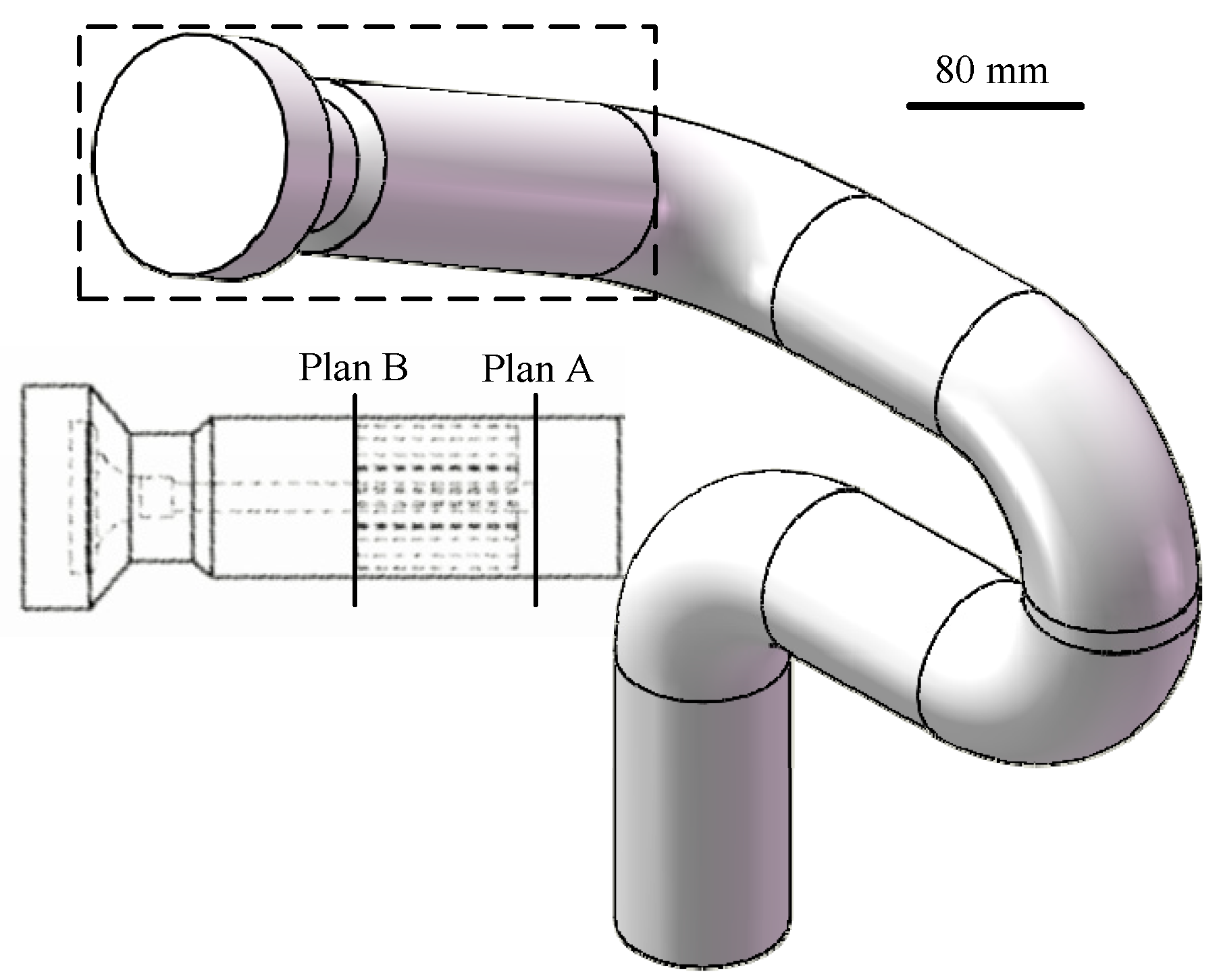
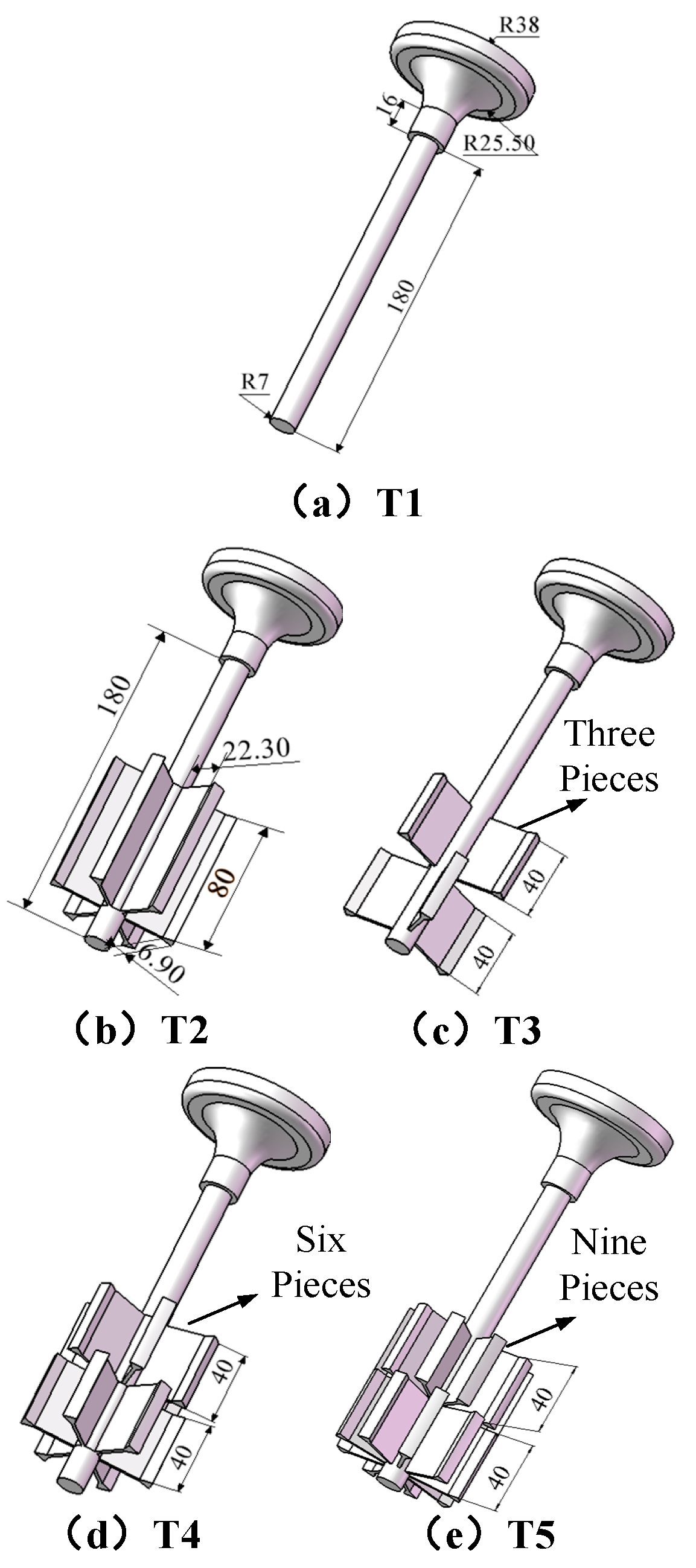
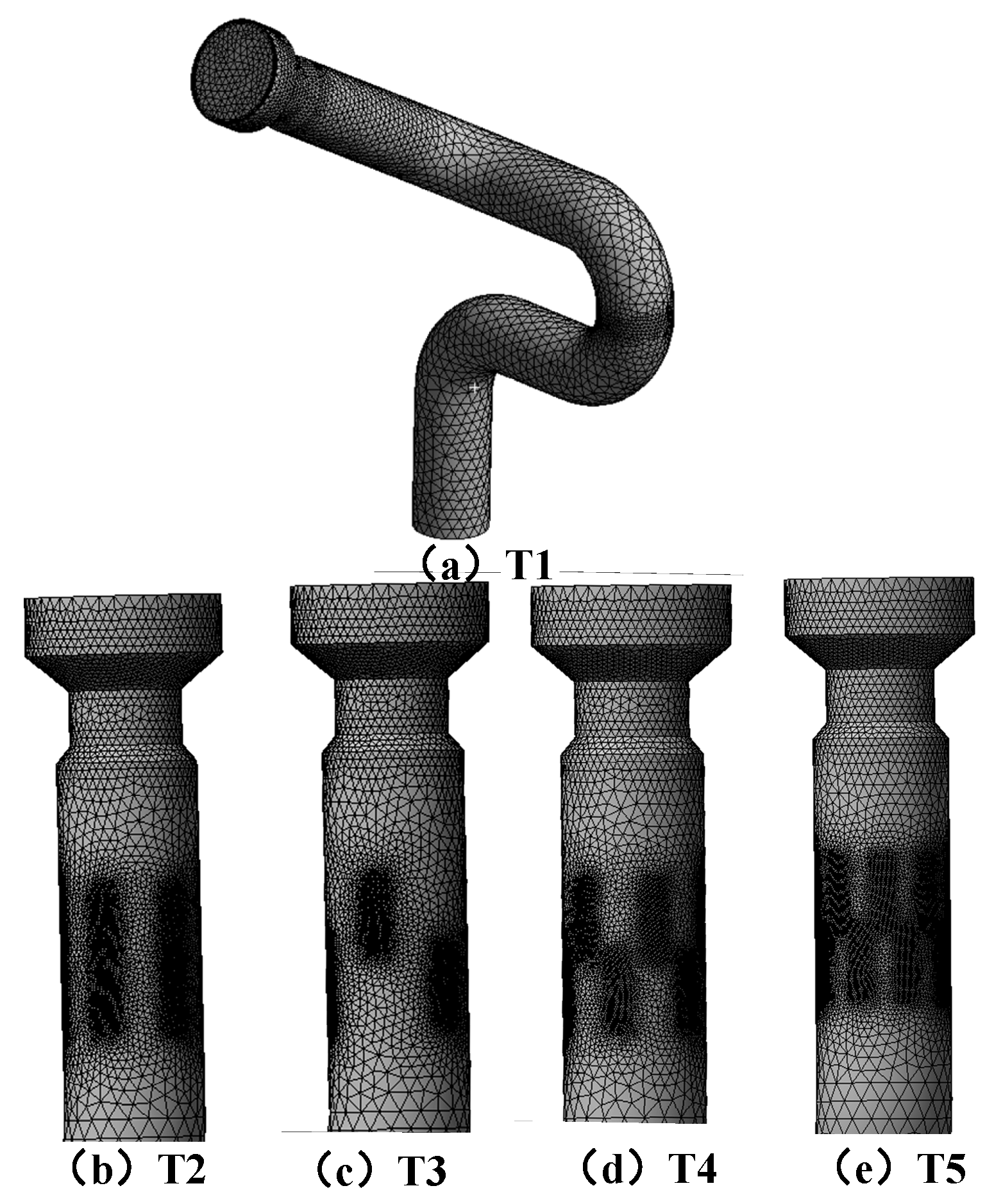
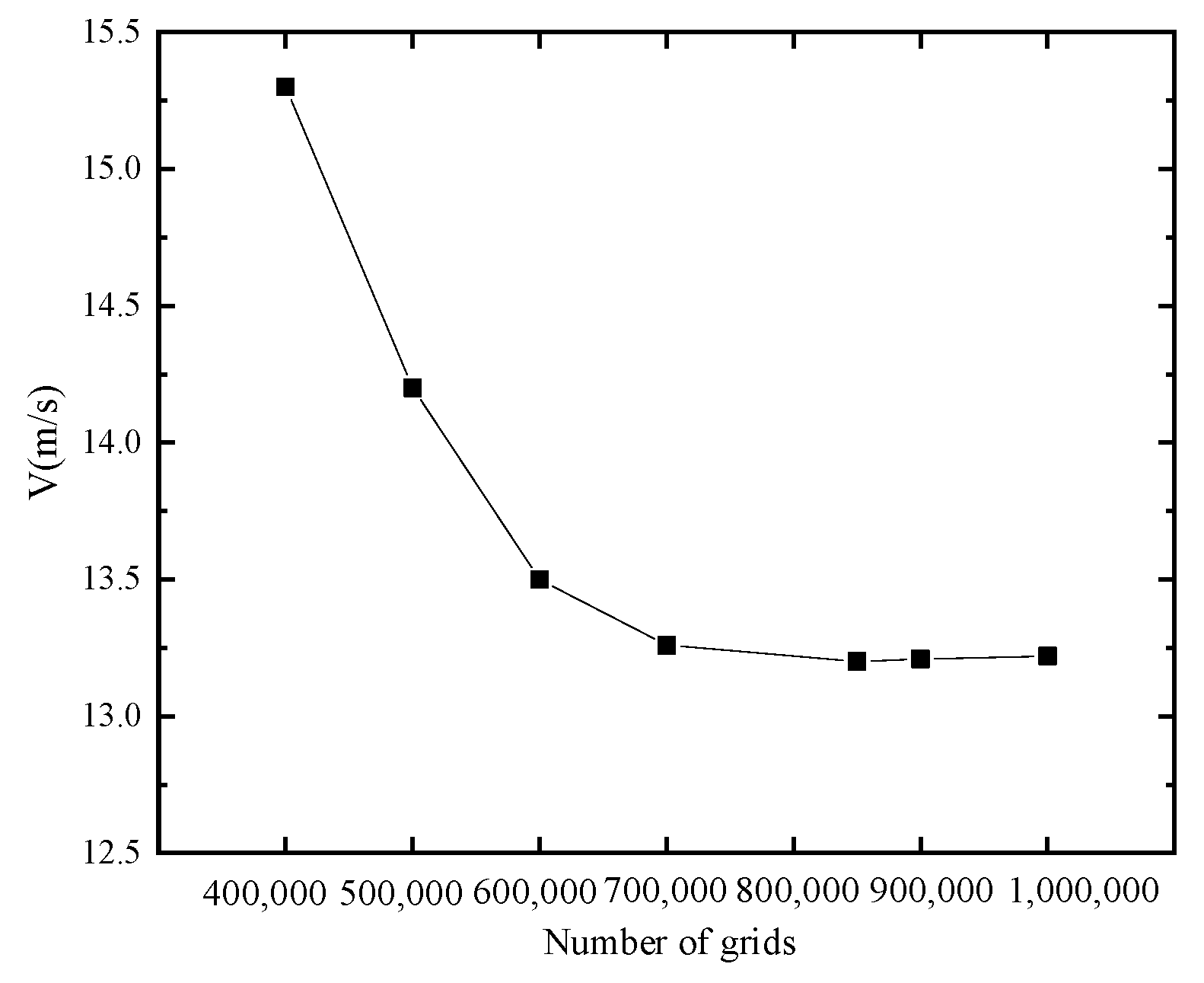
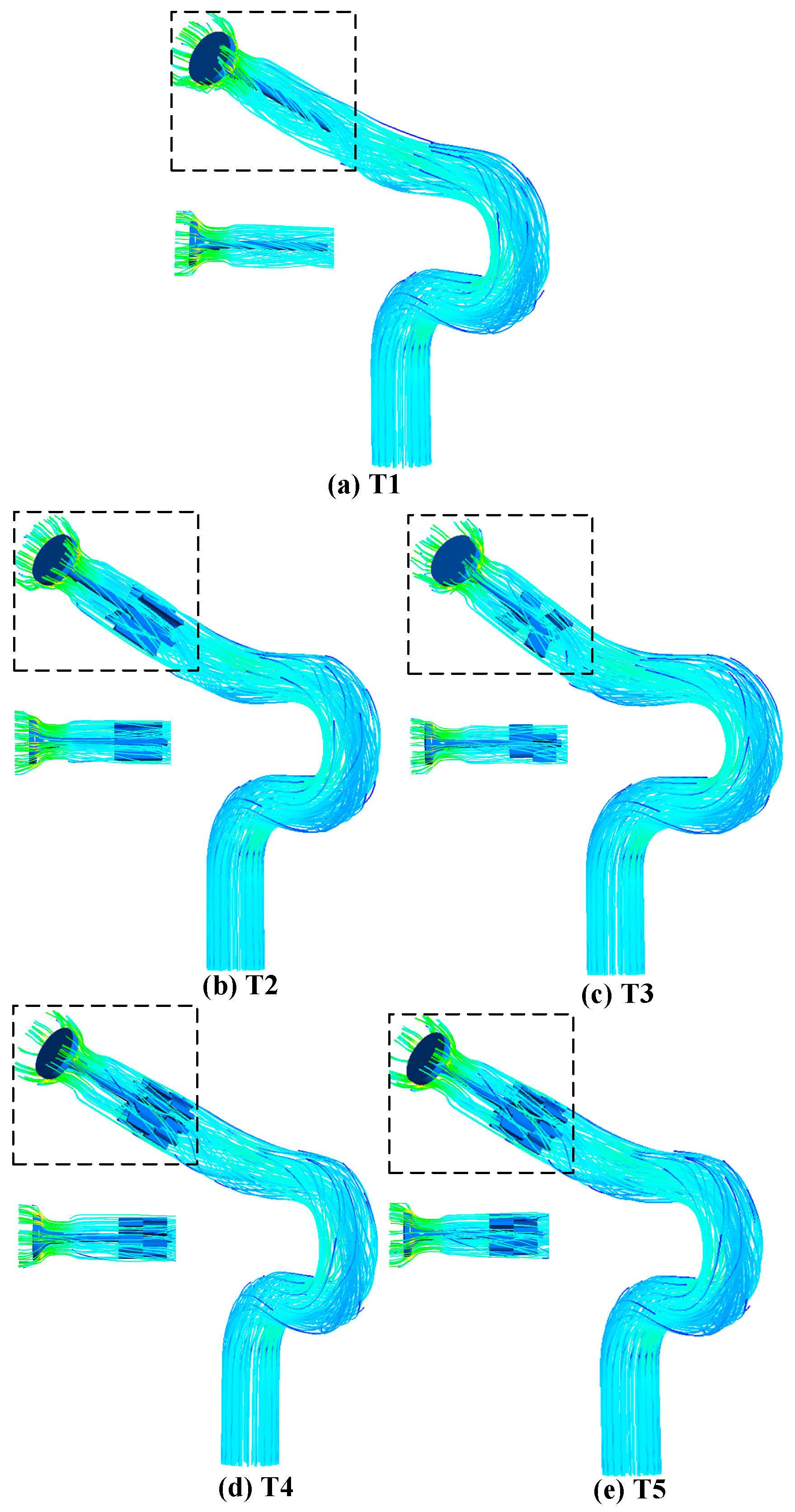
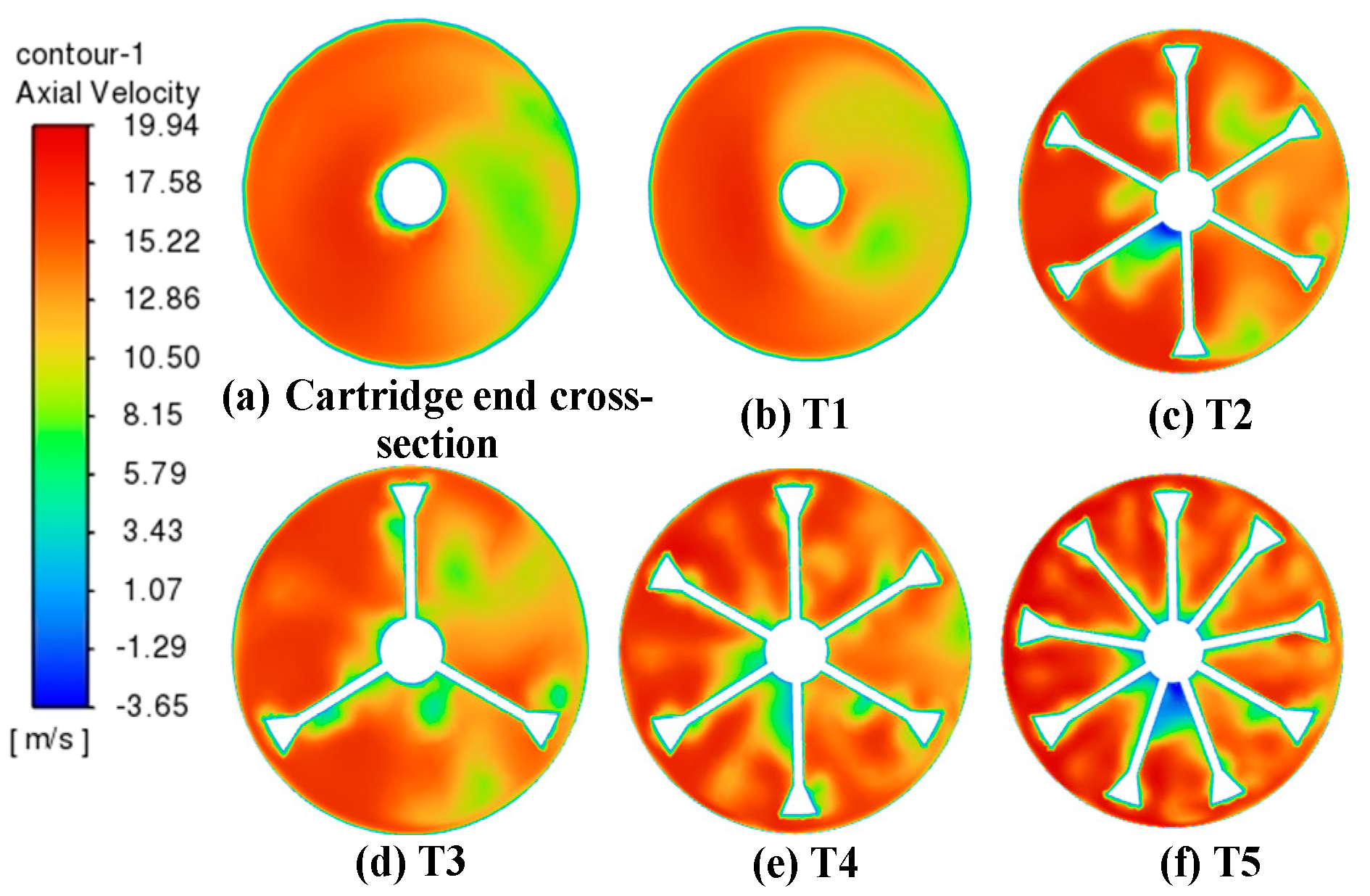
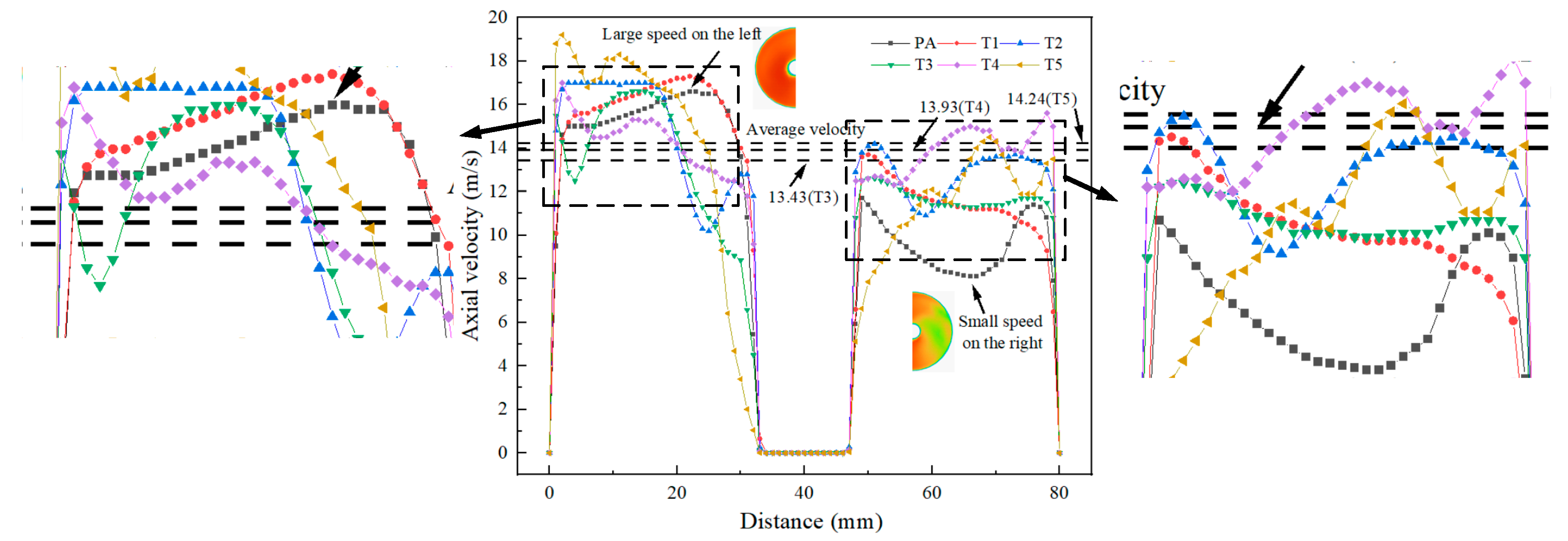

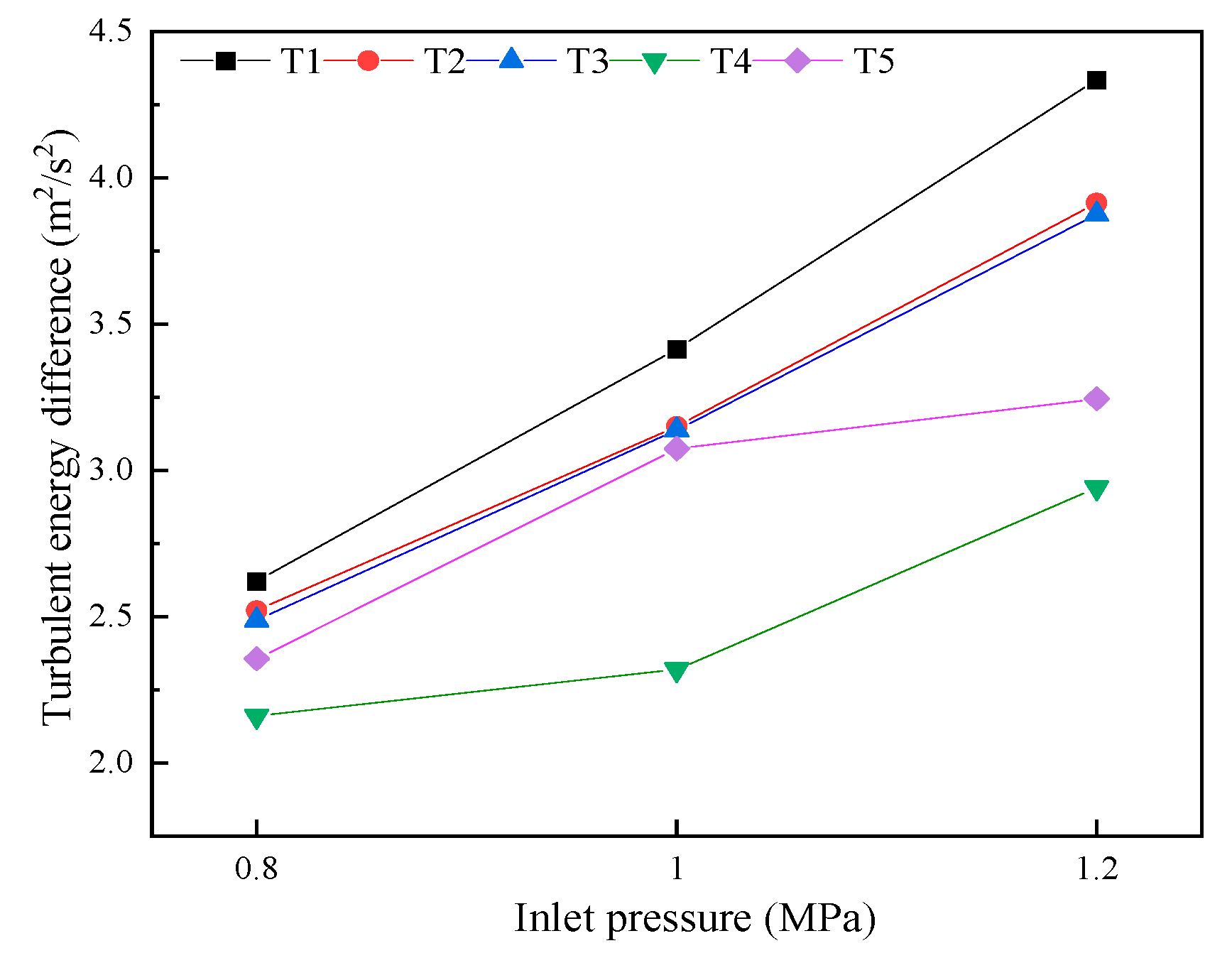
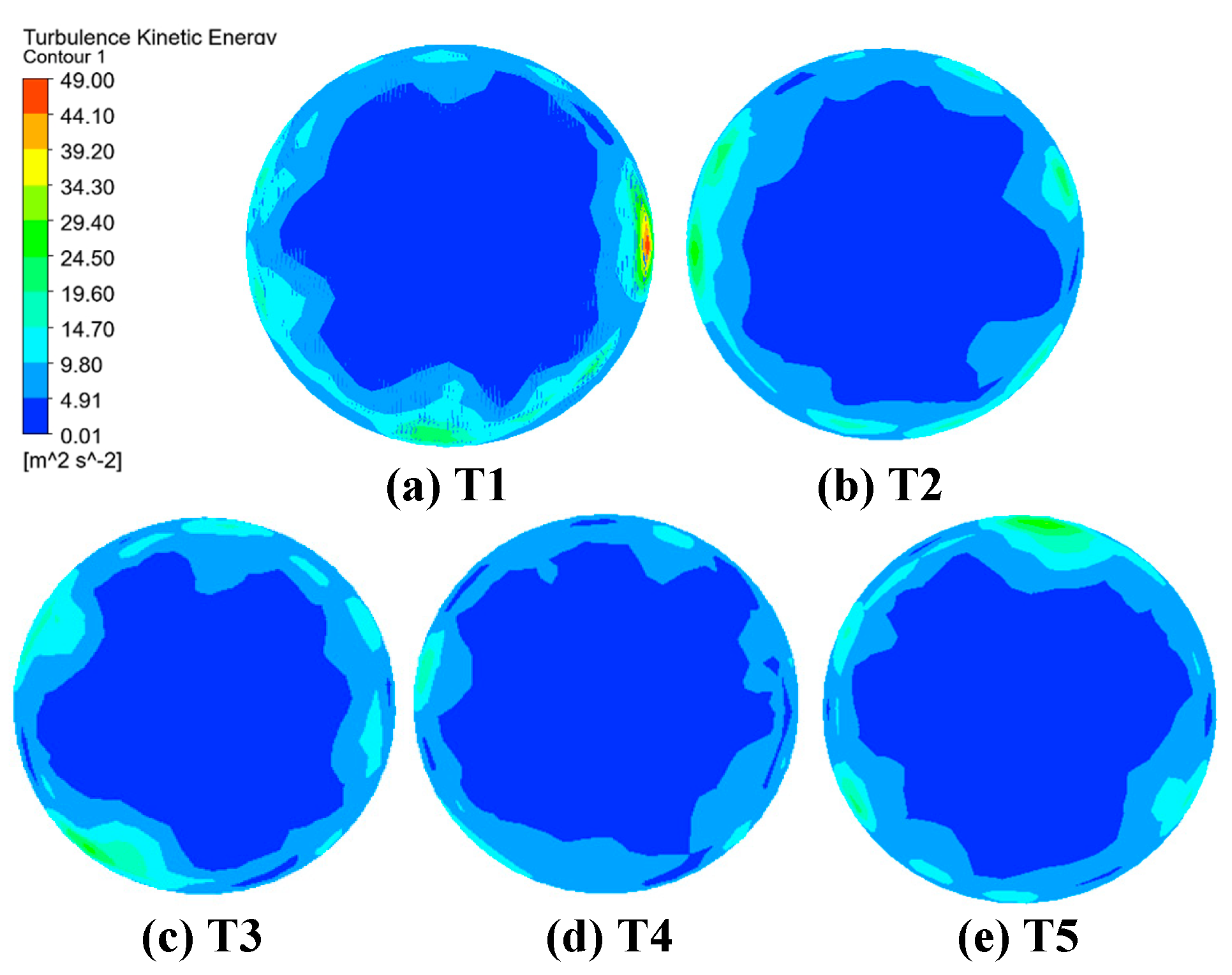

Disclaimer/Publisher’s Note: The statements, opinions and data contained in all publications are solely those of the individual author(s) and contributor(s) and not of MDPI and/or the editor(s). MDPI and/or the editor(s) disclaim responsibility for any injury to people or property resulting from any ideas, methods, instructions or products referred to in the content. |
© 2023 by the authors. Licensee MDPI, Basel, Switzerland. This article is an open access article distributed under the terms and conditions of the Creative Commons Attribution (CC BY) license (https://creativecommons.org/licenses/by/4.0/).
Share and Cite
Zhang, J.; Luo, S.; Huang, Y.; Guo, Y.; Zhang, J.; Li, D.; Zhao, C. Optimization of Rectifiers in Firefighting Monitors Used in UHV Fire Safety Applications. Energies 2023, 16, 3898. https://doi.org/10.3390/en16093898
Zhang J, Luo S, Huang Y, Guo Y, Zhang J, Li D, Zhao C. Optimization of Rectifiers in Firefighting Monitors Used in UHV Fire Safety Applications. Energies. 2023; 16(9):3898. https://doi.org/10.3390/en16093898
Chicago/Turabian StyleZhang, Jiaqing, Sha Luo, Yubiao Huang, Yi Guo, Jiafei Zhang, Dong Li, and Chuanwen Zhao. 2023. "Optimization of Rectifiers in Firefighting Monitors Used in UHV Fire Safety Applications" Energies 16, no. 9: 3898. https://doi.org/10.3390/en16093898
APA StyleZhang, J., Luo, S., Huang, Y., Guo, Y., Zhang, J., Li, D., & Zhao, C. (2023). Optimization of Rectifiers in Firefighting Monitors Used in UHV Fire Safety Applications. Energies, 16(9), 3898. https://doi.org/10.3390/en16093898






